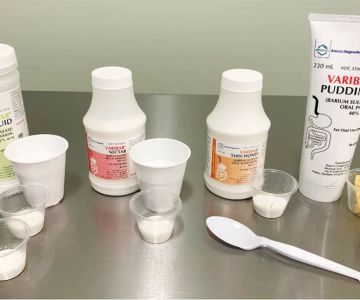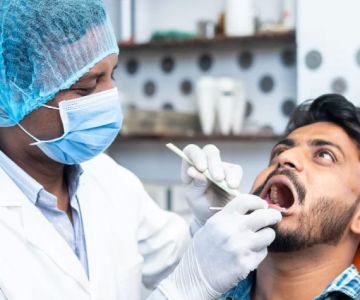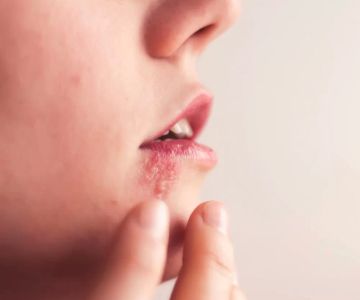How Dentists Check for Oral Cancer: A Comprehensive Guide
Oral cancer is a serious health concern that can often go unnoticed in its early stages. However, regular visits to the dentist can significantly help in detecting this condition before it advances. Dentists are trained to perform screenings for oral cancer during routine dental exams, making it an essential part of maintaining your overall health. In this article, we'll explore how dentists check for oral cancer, what you can expect during a screening, and the importance of early detection in preventing the disease from progressing.
1. The Importance of Regular Oral Cancer Screenings
Oral cancer can develop in any part of the mouth, including the lips, tongue, gums, the roof and floor of the mouth, and the inside lining of the cheeks. Detecting oral cancer early can significantly increase the chances of successful treatment and survival. In fact, according to the American Cancer Society, early-stage oral cancer has a higher survival rate compared to more advanced stages. This is why dentists include an oral cancer screening as part of their regular dental exams.
During your routine visit, your dentist will perform an examination that involves checking for unusual changes in your mouth, such as lumps, swelling, or patches of abnormal tissue. These screenings are quick, non-invasive, and can help identify potential issues early. It's important to understand that these screenings are just one part of a larger preventative approach to maintaining your oral and overall health.
2. Visual Examination: What Dentists Look For
One of the primary methods dentists use to check for oral cancer is a visual examination. During this part of the exam, the dentist will carefully inspect the inside of your mouth for any signs of abnormalities. They will look for:
- Lesions or sores that don't heal within two weeks
- White, red, or speckled patches on the gums, tongue, or the roof or floor of your mouth
- Lumps or swelling in the mouth or neck area
- Changes in the color or texture of the tissues in your mouth
Any of these signs could indicate potential oral cancer, but they may also be related to other, less serious conditions. That’s why your dentist will likely recommend further tests if they notice any abnormalities during the visual exam.
3. Palpation: Checking for Lumps or Swelling
Along with the visual inspection, dentists perform a process known as palpation. This involves physically feeling the tissues inside the mouth, as well as the lymph nodes in the neck and jaw area. The dentist will use their hands to gently press and feel for any lumps or swollen areas that could be indicative of oral cancer.
Palpation helps the dentist detect hard-to-spot lumps that might not be visible during the visual exam. In some cases, the dentist may also check for any unusual thickening or firmness in the tissues of the mouth. If they find anything suspicious, they may recommend a biopsy or additional imaging tests to confirm the diagnosis.
4. Using Technology to Enhance Screening
While visual exams and palpation are the most common methods for detecting oral cancer, advancements in technology have also played a role in enhancing oral cancer screenings. Dentists may use special tools, such as:
- Velscope: This device uses fluorescence to detect abnormal tissue changes in the mouth. The Velscope light causes healthy tissue to fluoresce, while potentially abnormal tissue appears darker. This tool can help identify areas of concern that may not be visible to the naked eye.
- Oral Cancer Screening Devices: Some practices use devices that can detect early signs of oral cancer by evaluating the tissues in the mouth. These devices are often non-invasive and provide an extra layer of protection for early detection.
While these technologies are not always used during every exam, they can provide additional insights that may help dentists spot oral cancer earlier, improving the chances of successful treatment.
5. What Happens After a Screening
If your dentist notices any unusual findings during the oral cancer screening, they may recommend further tests. These tests can include:
- Biopsy: A small sample of tissue may be taken from the suspicious area and sent to a laboratory for analysis. A biopsy is the most definitive way to diagnose oral cancer.
- Imaging Tests: Dentists may also recommend imaging tests, such as X-rays, CT scans, or MRIs, to determine the extent of the abnormality and whether cancer has spread.
If oral cancer is diagnosed, your dentist will work with an oncologist to develop a treatment plan tailored to your specific condition. Treatment may include surgery, radiation, or chemotherapy, depending on the stage and location of the cancer.
6. How You Can Help Prevent Oral Cancer
While regular screenings are essential for early detection, there are also steps you can take to reduce your risk of developing oral cancer. Some of the key preventative measures include:
- Avoid Tobacco Use: Smoking and using smokeless tobacco significantly increase the risk of oral cancer. Quitting tobacco can lower your risk and improve your overall oral health.
- Limit Alcohol Consumption: Excessive alcohol consumption is another risk factor for oral cancer. Drinking in moderation or avoiding alcohol altogether can help reduce your risk.
- Protect Your Lips: The skin on your lips can also be susceptible to cancer. Wear lip balm with SPF protection to reduce the risk of sun damage.
- Eat a Healthy Diet: A diet rich in fruits and vegetables can help promote oral health and may reduce the risk of cancer.
- Get Regular Dental Check-ups: Regular visits to your dentist for exams and screenings are crucial for catching any potential issues early.
By taking these preventive measures, you can lower your risk of oral cancer and ensure your mouth stays healthy for years to come.
OLD Keywords-8:SEO Title: How Dentists Check for Oral Cancer: Early Detection and PreventionSEO Keywords: how dentists check for oral cancer, oral cancer screenings, dental checkups, early detection of oral cancer, prevent oral cancerSEO Description: Learn how dentists check for oral cancer during routine dental exams. Discover the importance of early detection, screening methods, and preventative tips for maintaining oral health.






 Sundance Endodontics5.0 (254 review)
Sundance Endodontics5.0 (254 review) Kaiser & Rosen Dental Associates4.0 (107 review)
Kaiser & Rosen Dental Associates4.0 (107 review) Bonanza East Dental4.0 (24 review)
Bonanza East Dental4.0 (24 review) Barclay Family Dental4.0 (152 review)
Barclay Family Dental4.0 (152 review) Children's Dentistry5.0 (1 review)
Children's Dentistry5.0 (1 review) Tend East Nashville4.0 (319 review)
Tend East Nashville4.0 (319 review) The Importance of Oral Health Education During Pregnancy for a Healthy Pregnancy
The Importance of Oral Health Education During Pregnancy for a Healthy Pregnancy Best Tips for Brushing Your Teeth Properly for Healthy Gums: Essential Techniques for Oral Health
Best Tips for Brushing Your Teeth Properly for Healthy Gums: Essential Techniques for Oral Health Why Skipping Dental Checkups Can Lead to Bigger Oral Health Problems
Why Skipping Dental Checkups Can Lead to Bigger Oral Health Problems Advantages of Porcelain Dental Restorations
Advantages of Porcelain Dental Restorations How Can Diabetes Cause Tooth and Gum Problems? Preventing and Managing Oral Health Issues
How Can Diabetes Cause Tooth and Gum Problems? Preventing and Managing Oral Health Issues Healthy Habits for Promoting Good Oral Health and Hygiene: Tips for a Healthy Smile
Healthy Habits for Promoting Good Oral Health and Hygiene: Tips for a Healthy Smile